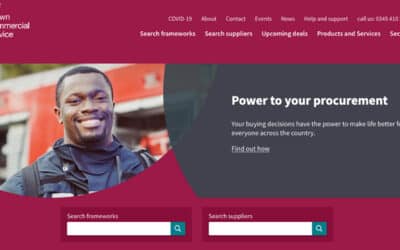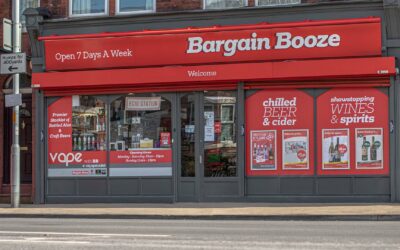James Lawton-Hill, Marketing Director at APS, outlines the benefits you can harness by implementing a hybrid agency partnership, boosting your capabilities beyond what is possible with an in-house team.
We’re constantly surrounded by partnerships, from Ben and Jerry’s teaming up with Netflix for their new flavour of ice cream, Netflix and Chilll’d, or when fashion giant H&M regularly partners with luxury fashion brands to release limited edition collections for the high street.
The reasons why these partnerships work so well is because they’ve been carefully selected to ensure that both brands will resonate with both audiences – they culturally fit. And this is important for marketeers to remember with their internal partnerships too.
You don’t need reminding of the monumental challenges some businesses have faced this year, but one way in which some have navigated this year successfully is by relying on the strength of their marketing partnerships. Whether brands use an on-site agency, off-site, or a mixture of both – hybrid – those with strong relationships in place have been able to respond to changing demands more swiftly than others.
Getting the right agency partnership for you
Traditional in-house marketing teams will give you the greatest control over your brand, but lack scalability and can be very expensive, adding a lot of capital expenditure to your business.
The ever-developing and evolving digital landscape has created new specialisms that traditional in-house marketing teams can’t always easily recruit for. Therefore, an on-site agency model can give you far more access to talent, ideas, resources and options to scale. However, you need to make sure that marketing doesn’t become more sales support, and that they become fully integrated and aligned with your brand.
A third option which is becoming far more common and is often the highest performing, is that of a hybrid agency. This gives brands the best of both worlds – a robust, efficient on-site creative team working with your marketing team, fused with an innovative full-service agency near-site.
What powers can you harness from a hybrid agency partnership?
Power 1: Scalability
Increasingly important in the current climate – brands have the opportunity to quickly ramp activities up or down based on demand. In times when every penny is being scrutinised, it’s increasingly vital for brands to have fluidity in how and when they use creative agency services.
With uncertain economic climates, teams furloughed or redundancies looming, a hybrid agency approach can give businesses confidence that any reduced capacity can be filled without additional fixed costs and importantly, little impact on output quality.
Power 2: Better collaboration
When in-house marketing teams and your agency are focused on co-creation of the brief right through to delivery, you are reinforcing a one team approach. This means that all stakeholders have visibility from the start and can influence decisions along the way.
A common misconception of working as a hybrid partnership is that you have to pick just one agency to streamline your activities, but this isn’t the case. Yes, you will minimise your roster of agencies to provide efficiencies for your BAU activities, but that doesn’t mean you can’t still have multiple partners working together.
Power 3: Speed
Businesses can take advantage of short-term opportunities and disruptive trends by knowing they have the dedicated support of a hybrid agency partner.
More so than ever, reactive digital communications and campaigns are needed to stay connected to your customers and that means the need for speed. However, working with an embedded hybrid agency partner means that brand understanding and consistency is not impaired by faster turnarounds, as all agency partners know the brand inside out.
Power 4: Cost efficiencies & ROI
One of the greatest drivers for brands implementing a hybrid model is to make cost efficiencies. Although initial set-up costs are higher once fully implemented, businesses start to see savings straight away from reduced reworks, higher productivity and greater operational control.
A good agency partner will include all the usual campaign analytics and workflow technologies, but above that you can also see studio performance dashboards to show you utilisation rates, timesheet summary and job summary (open, due, late, on/over budget, etc.). You’ll easily be able to spot bottlenecks and inefficiencies, and because the agency is already aligned with your business and culture, they can be addressed swiftly.
Power 5: Specialist talent
Video marketing, artificial intelligence, new social media platforms, app development, digital accessibility, and augmented reality are all examples of specialisms you may not have access to with traditional in-house marketing. It may be that you only need one of these specialisms for a short period of time or for a one off campaign, and this is where a hybrid agency model comes into its own as specialist talent can be tapped into at the agency as and when required, to support the integrated onsite team.
APS successfully delivers hybrid agency models into different brands across many sectors – from Superdrug to Standard Life – creating a collaborative and creative model that allows great partnerships to develop. To find out more about their services or learn how APS can make more possible for you, contact [email protected].











